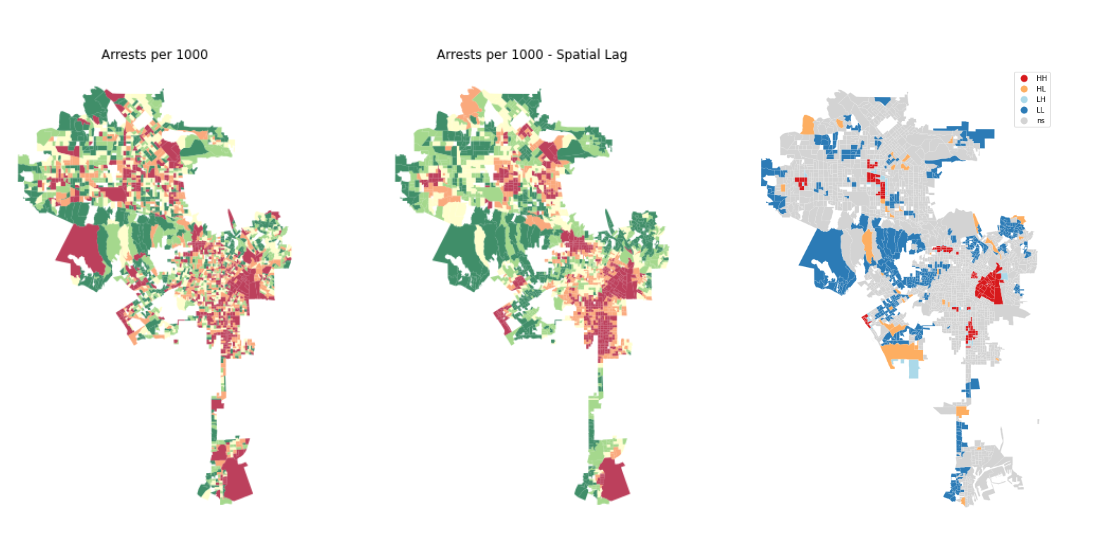Visual interpretations are meaningful ways to determine spatial trends in our data. However, underlying factors—such as inconsistent geographies, scale, data gaps, overlapping data—have the potential to produce incorrect assumptions, as valuable information may be conveniently hidden from the visual output.
One way to address this issue is to amend your visual output with geo-statistical validation. In this workshop, we will use Python to look at one such approach: Spatial Autocorrelation. Spatial autocorrelation addresses the so-called "First Law of Geography":
“Everything is related to everything else. But near things are more related than distant things”. Waldo Tobler’s (1969) First Law of Geography
In other words, things that happen somewhere are likely to also happen at nearby locations.
Choose "University of California, Los Angeles" from the drop down for "Identity Provider" and launch (just type "UCLA" in the search box).
Warning: Launching the binder link will take about 5 minutes.
